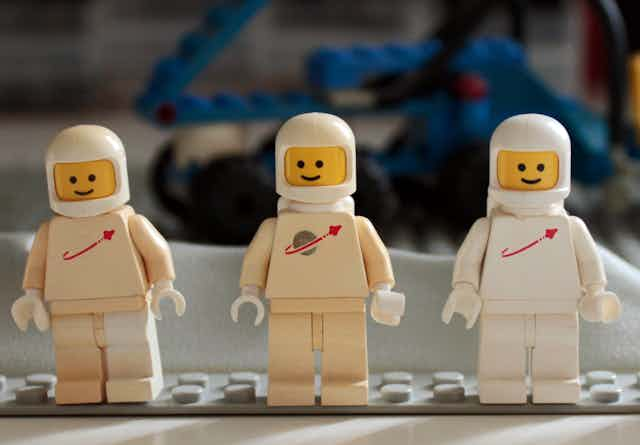With Earth orbit travel likely to be an affordable luxury by the mid-2020s, it’s predicted a new travel industry will emerge. Tours will show people the glory of a sunrise from space, plus some interesting items of space-junk that have accumulated over the past 60 years.
Somebody needs be in charge of these tours and explain to the space travellers what’s going on. So welcome to the era of the space tour guide.
That’s just one of several new jobs predicted to exist by 2025 according to the Tomorrow’s Jobs report, released this month by consultants The Future Laboratory who teamed up with Microsoft.
The report aims to bring some clarity for career planners. It says many of today’s school students work in jobs that do not exist… yet.
So along with space tour guide, what other new jobs does the report predict could be on offer by 2025?
Virtual habitat designer
Virtual reality will outgrow gaming to become a feature of consumer electronics generally. In China alone around 200 VR startups are absorbing the most talented designers, creating demand globally that has jumped 800% since 2014.
VR designers will become integral members of product design teams in the creation of new VR experiences running on ever-cheaper but more powerful equipment.
The designers most in demand will be those who combine the narrative skill of the game designer with the spatial awareness of the architect, urban designer and landscape architect. They will create fascinating virtual worlds that people will not want to leave.
Ethical technology advocate
Much has been written about robots replacing humans. Without doubt, some categories of process-driven jobs will be automated. But what of the jobs that robots and artificial intelligence (AI) will create?
The robotics engineer, AI specialist and maintenance worker will all be in demand. But we will also need people who advise on how humans and robots should act towards each other. We will also need to educate robots about our often idiosyncratic behaviour so they can react to us appropriately.
One principle of human-machine interaction might be that if a robot is capable of experiencing suffering, then it should not be made to suffer. At the same time, a robot must avoid harming a human, and prevent a human from being harmed by other means.
These robot ethicists will have the important job of mediating between people and robots, advocating on behalf of the robots. Why? Because the general population may need some convincing that robots are good to have around, and to counter the perception that they are dangerous. Germany has already allocated €200 million to research this area.
Digital cultural commentator
Digital communication is evolving from text-based to being visual. This is already happening as Pinterest and Instagram are growing faster than text-based platforms such as Facebook and Twitter.
By the 2020s, visual communication is likely to be dominant, with multimedia artists, animators and illustrators being in greater demand by organisations wanting to communicate with a mass audience.
Visual skills such as animation will be complemented with music, text, object-oriented programming and augmented reality.
The ideal worker in this field blends advanced technology skills with the humanities. They understand human nature and know how to use the latest technology to create compelling narratives.

Freelance biohacker
Open-source software platforms combined with a tremendously information-rich internet is putting the tools of science within the reach of millions who were previously unable to participate in research.
This is giving rise to the citizen scientist, who is already proving that remarkable things are possible by motivated amateurs.
Beyond this, we will see the growth of crowd-sourcing to find solutions to complex medical and technological challenges.
For example, the open-source gene-editing tool CRISPR is being used by thousands of scientists to collaborate in search of cures for depression, schizophrenia, autism and Alzheimer’s to name just a few.
By the 2020s, citizen science will have evolved into a viable career for millions of bioscience graduates with an entrepreneurial attitude.
Internet of things data creative
By 2025 there will be billions of pervasively embedded devices in everyday objects that gather data about many things, the sheer quantity of which defies imagination.
We already call this Big Data but it is going to get much bigger.
Internet of things data creatives are analysts with creative flair. They not only find the useful information buried in the data, they also know how to tell an engaging story with it.
The job will combine the technical skill of the data scientist with the communication skills of the digital cultural commentator mentioned earlier. Their work will have a major impact in tomorrow’s hyper connected world.
Other future employment options
These are just a snapshot of a few of the future employment options predicted in the joint Future Laboratory/Microsoft report.
Other options in the report include personal content creators to expand the storage capacity of the human brain, rewilding strategists to rehabilitate degraded ecosystems, sustainable power innovators to devise new energy sources in a post-carbon world and even human body designers to create custom prostheses.
The common thread that runs through all these predictions is the need for creative thinkers with a combination of technical and non-technical people skills.
Progressive universities will be those that encourage creativity and apply it to a wide range of multidisciplinary studies. People with these attributes will not be replaced by robots for a long time.

